December 6, 2018 — At first glance, Nishiawakura — a village in southern Japan — looks picturesque. The hills surrounding the valley in which Nishiawakura sits are a lovely, dense dark green, covered almost entirely with evergreen trees, while the river running through the center is crystal clear. But take a walk in the woods and immediately something seems amiss. No undergrowth; an eerie silence; dry, hard soil; and confounding uniformity — nearly all the trees are the same height and spaced evenly apart.
“They have a sterile aspect in them, and down underneath there is not very much,” says Gerald Marten, an ecologist at the East-West Center in Honolulu, Hawaii, who has lived and conducted research in Japan. “Biologically and ecologically, it’s a simple ecosystem.”
The river also seems off, too clear and devoid of much shore greenery or other life.
“We don’t see much fish there, and one of the reasons is because we only have evergreens alongside the river,” says Sunao Tabata, co-founder of Hyakumori, a Nishiawakura-based forestry company aiming to create a new, sustainable model for forest management. Because evergreens don’t drop many leaves, Tabata says, that “means less minerals and vitamins for bugs that live off the land, which is problematic for fish.”
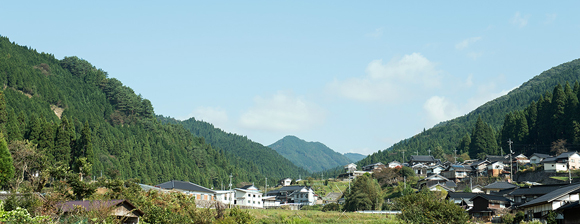
At a distance, the forests around Nishiawakura village in Japan look picturesque, but due to post-World War II reforestation efforts that emphasized planting one or two tree species, the woods harbor very little biodiversity. Photo courtesy of Eiko (te+te)
Nishiawakura’s landscape may look natural, but in fact it’s the result of a large-scale tree-planting initiative. During World War II, huge swaths of forested countryside were cut down to provide energy for Japan’s war efforts, according to Marten. After the war, a booming demand for timber, primarily to aid in reconstruction, resulted in even more forest loss. When the government began reforesting, it did so in a way that prioritized things other than biodiversity, and today the country is paying a steep price both ecologically and financially.
As momentum grows around the world for reforestation, due in part to the need to sequester carbon, Japan’s experience can inform countries like China, Pakistan and India, which aim to plant millions of trees in the coming years after decades of deforestation due to economic growth, expansion of agriculture and demand for wood as a fuel.
Short-sighted Plan
After WWII the Japanese government recruited villagers to plant millions of trees in an effort to both rebuild the country’s wood stocks for future development and protect villages from landslides and rain runoff. Instead of planting broadleaf trees like Japanese beech, the government chose to only plant two tree species, the fast-growing evergreens hinoki (Japanese cypress) and sugi (Japanese cedar). In some areas, native forests were even cut down and replaced by more lucrative plantation forests. When all was said and done, an astounding 44 percent of Japan’s total forest cover was converted to these one- or two-species forests.
“They had incentives to clear cut the broadleaf trees and plant sugi and hinoki trees,” says Tabata.
The result was a countryside devoid of biodiversity, like that around Nishiawakura. And to make things worse, the evergreen trees were never cut down as planned due to the availability of cheap imports from Southeast Asia. Unharvested trees are now releasing huge amounts of pollen into the atmosphere, resulting in mass hay fever that sickens a large percentage of the population each spring and could be costing the economy US$2 billion, primarily due to lost worker productivity and more sick days.
“The plantations’ aim was to produce good products — straight, big trunks, and to do that they required care; proper pruning, thinning and so on, and this has really declined a lot,” says Marten. “It was not only that they were not harvesting, but also in the expectation of not harvesting, they weren’t bothering to take care of them.”
Repeating the Same Mistakes
Today, massive reforestation campaigns are taking place around the world to build resilience and mitigate greenhouse gas emissions. But many are making the same mistakes Japan made, using a single species, like in China, or ones that may not be the right species, as some claim is happening in Pakistan.
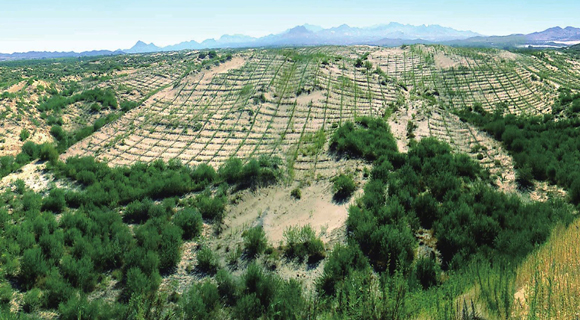
China’s reforestation efforts, launched in the late 1990s as the Grain-for-Green program to control soil erosion, have often been hailed as a success. However, when researchers have looked more closely at the program, they’ve found many of the same issues as in Japan. Photo courtesy of Wikimedia Commons
This has been a problem in Brazil and Australia, too, says Fangyuan Hua, a conservation ecologist at the University of Cambridge. “I think one relevant factor is that the motivation for reforestation is not biodiversity. In China, [it’s] soil erosion control. In Brazil, water provisions, and now carbon sequestration,” Hua says.
China’s reforestation efforts, launched in the late 1990s as the Grain-for-Green program to control soil erosion, have often been hailed as a success. They are a key reason that some metrics show global forest cover increasing in the past decades. However, when researchers have looked more closely at the program, they’ve found many of the same issues as in Japan.
“The whole Grain-for-Green program was established for soil erosion purposes and had an implicit assumption that any type of tree cover was good,” says Hua, a researcher who has studied the program. “One conifer species was used, and once they grew up and closed the canopy, the cover can be so dense that the understory can be really bare.”
As in postwar Japan, China’s project didn’t consider biodiversity or the broader impacts of monoculture or duo-culture forests. “If a program’s goal is about biodiversity conservation, then restoring native forests is the best choice. But when the goal is something else, then there is a tendency for programs to not consider biodiversity in their design,” says Hua.
A Better Model?
Efforts toward this type of thinking are underway in Indonesia, where deforestation and fires connected to palm-oil production and timber exports have been rampant. “We’re trying to restore ecosystems here, not just trees, and plantations are not going to provide all the ecosystems that forests provide,” says forest expert Kinari Webb, founder of the non-governmental organization Health in Harmony, which works in Indonesia. “Forests need to be diverse.”
The destruction of Indonesia’s tropical forests can be directly connected to Japan, for years the chief destination of Indonesian timber and plywood exports. In Borneo, which faced the brunt of the timber boom, Health in Harmony, in partnership with the local non-profit Alam Sehat Lestari (ASRI), has restored over 150 hectares (370 acres) of degraded tropical forest land working directly with local communities, says Mahardika Putra Purba, conservation manager at ASRI. Borneo tropical rainforests host immense biodiversity, sometimes thousands of species living alongside each other. While reforestation to that level of biodiversity is impossible, especially in short time frames, ASRI does focus on biodiversity as a goal, using a mix of about 100 native plant species sourced from local villagers, says Webb. It has found that designing for an initial amount of biodiversity opens the door for other species to follow.
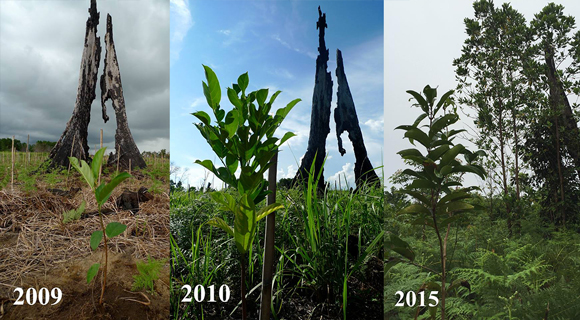
A reforestation project in Borneo has restored over 150 hectares (370 acres) of degraded tropical forestland working directly with local communities. Photo courtesy of Alam Sehat Lestari
“What we’re finding is that there [is] a huge diversity of seedlings that are now growing up under the trees that were planted, and they are being dispersed into our forest from birds and mammals that are coming in,” says Webb. “If you can get enough biodiversity [planted], then the rest of the biodiversity will get in.”
ASRI’s reforestation efforts have proved far more successful than efforts by Indonesian park officials, so now ASRI is working with the park service to help reforest more of Gunung Palung National Park, which has been heavily damaged by illegal logging and fires. The next step will be to analyze and quantify the many benefits that come from incorporating biodiversity.
“The reforestation program has been going on for the last 10 years,” says Purba. “We’ve planted a lot of trees, but we haven’t really had data on the carbon we’ve restored or how the quality of water has improved. The assumption is that it should be different — it should be more beneficial.”
Rectifying Past Mistakes
Even in Japan, new models are being explored to rectify the mistakes of the past. In Nishiawakura, a local-government-led initiative is looking at how the forests around the village can be a source of innovation for the local economy. It is creating a 100-year plan that looks at lessons of the past 50 years and plans for the next 50 years, with sustainability at its core.
“[The idea] was that we would maintain the forest in terms of ecology and safety [from the risk of landslides due to soil erosion], but also for the local economy,” says Yoshiro Toyohuku, a staff person in the Nishiawakura village office.
In the years since the plan was launched, Nishiawakura has seen an eightfold increase in forest-related income, with small-scale harvesting taking place alongside the development of local timber processing facilities and even a biomass plant that is creating renewable energy from what would otherwise be waste.
Hyakumori, which is a public-private partnership to create value from the forest, is one of the drivers of this initiative. It is using LIDAR (light detection and ranging) to map forestland and determine where to harvest trees, where to preserve landscapes and where to build resilience against landslides and runoff. Unlike other forestry companies, biodiversity is a core concern, Tabata says.
“It’s not sustainable to have one or two kinds of trees,” says Tabata. “What happens if the climate changes and it’s not suitable for those trees? The forest is going to die. That’s not common sense. We want to create diversity that is resilient to many kinds of changes. To do that, we have to look at it from an ecological, not just economical, point of view.”
Problematic Mandate
There is a problem, though. According to Tabata, current national Japanese forestry law mandates that whenever a sugi or hinoki tree is cut down, it must be replanted with a seedling of the same species. This limits the ability of Hyakumori and Nishiawakura to reintroduce more diverse native species and create a more vibrant, living, biodiverse forest around the village.
Because of the current law, Tabata doesn’t feel that the government incentivizes biodiversity in forests. “Most of their policies are based on how to cut more trees and make that into an industry.” By showcasing a path forward to rebuild Nishiawakura’s forestry sector, Hyakumori aims to push the government to update its policies and allow for more local control, which in turn can enable it to fulfill the goals of the 100-year plan.
Tabata believes Hyakumori can change the future of all of Japan’s forests. If it can create a sustainable forestry industry that increases biodiversity and encodes long-term thinking, the hope is to do the same in other villages surrounded by underutilized, artificial forests.
“Nishiawakura could be the model for Japan’s forestry,” says Tabata. “We want to export our model — to make sustainable and profitable forestry — to other areas and benefit villages and Japan as a whole.” ![]()
Reporting for this story was supported by the Earth Journalism Network’s 2018 Asia-Pacific Story Grants.
Related Posts
Ensia shares solutions-focused stories free of charge through our online magazine and partner media. That means audiences around the world have ready access to stories that can — and do — help them shape a better future. If you value our work, please show your support today.
Yes, I'll support Ensia!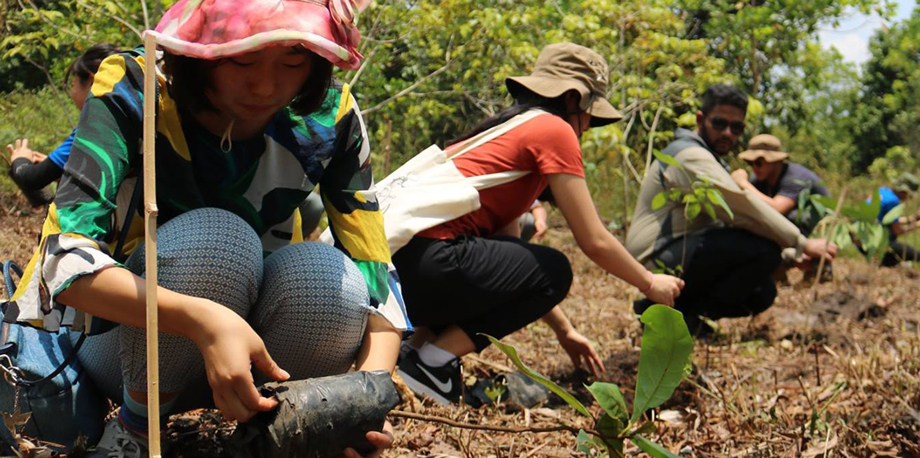




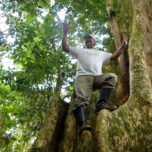
Also, as allergy potential is so rarely even considered when they call to "plant a million new trees" or so on...often the new trees just again create ever more human health problems.
Trees are not simply trees....evergreens are not simply evergreens...there are crucial differences and they need to be taken into account.
Some trees, female ones, produce no pollen, but these are rarely planted.
Overall...an excellent article!